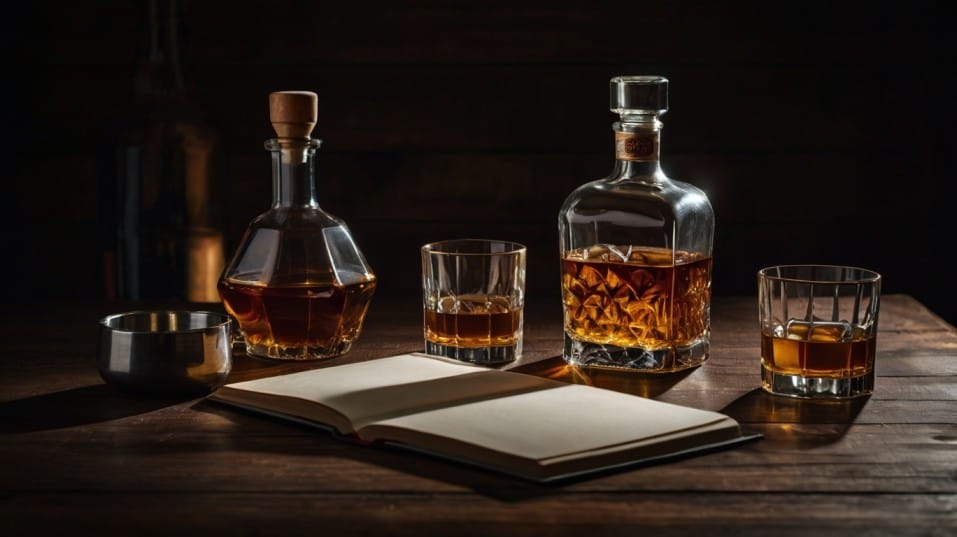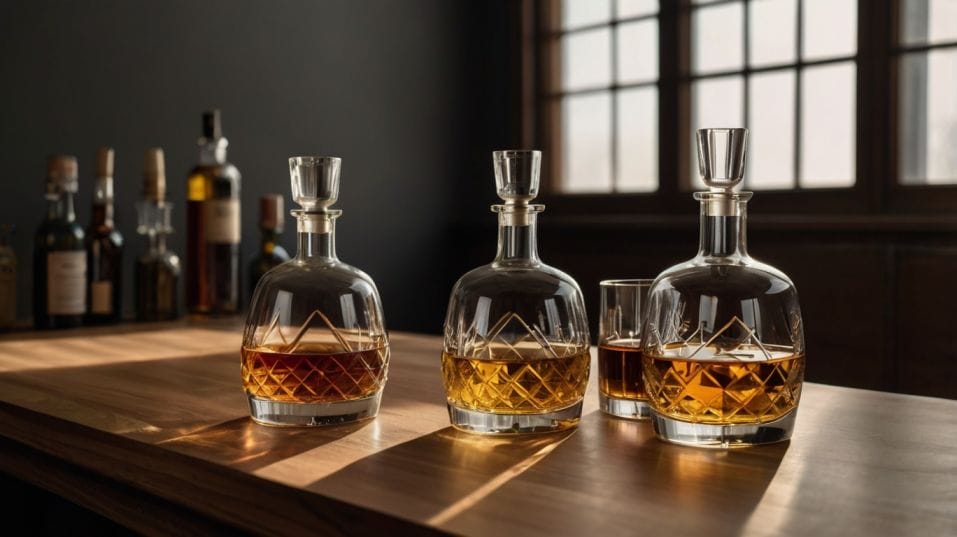The Perfect $500 Whiskey Setup (No Fluff)
Build a smart $500 whiskey setup that sharpens your palate. Learn what to buy, how to taste, and why every detail makes your pours better.

What if $500 could unlock a whiskey setup that actually teaches you to taste—not just collect? You’re done chasing labels and hype. Now it’s about clarity.
Understanding why one pour lingers and another falls flat. This guide strips out the noise. You’ll get the right glass, a range of flavor-building bottles, and the tools that sharpen your senses. No gimmicks. Just a setup that helps you drink smarter.
Start With the Glass: Shape Trains the Palate
Most people start wrong. They reach for the bottle first. Don’t. You taste with your nose as much as your mouth. Your glass needs to reflect that. A wide tumbler blunts aroma. A narrow mouth concentrates it.
That’s why almost every serious whiskey taster uses a tulip-shaped glass—like a Glencairn, Copita, or NEAT glass.
Why does it matter? Because aroma reveals complexity. It sets the stage for texture and finish. A proper glass doesn’t just make whiskey smell better—it teaches you how to recognize balance, flaw, and nuance.
You’ll start noticing how a rye smells sharper than a bourbon. How sherry-finished malts lean fruity and rich before the first sip even touches your lips.
Buy two to four. Don’t overthink the brand. Just make sure it has a stem or tapered mouth. Use them every time. Consistency trains your senses more than fancy gear ever will.
Estimated cost: $40

Build a Functional Bottle Lineup—Not a Trophy Shelf
The biggest rookie mistake? Buying five versions of the same thing. Five bourbons. Or five trendy bottles with the same oak-heavy, high-proof profile. That’s not a setup. That’s noise.
Your ideal bottle range should give you contrast. Think of it like building a reference library—each bottle is a sensory chapter. It should show you how ingredients, geography, and technique shape flavor.
A classic bourbon
Not the over-oaked, limited-edition stuff. Go for something that shows balance—corn sweetness, moderate char, and clean finish. You want a bottle that shows what good bourbon tastes like before the price tag inflates.
A spicy, character-driven rye
Rye sharpens your palate. It’s leaner, more angular, often with mint, citrus, or cracked pepper on the nose. It shows how grain choice changes a whiskey’s core identity.
A single malt with regional clarity
Scottish Highlands, Islay peat monsters, Japanese harmony—pick one that challenges your expectations. Malts stretch your flavor vocabulary, especially when you taste across different cask finishes (sherry, port, wine) and distillation styles.
A wildcard
This is your experiment bottle. Cask strength. Peated bourbon. Mizunara oak finish. Anything that breaks the mold and forces you to recalibrate. The more it makes you think, the more it earns its place.
Altogether, this lineup gives you range. With every side-by-side comparison, you build intuition. You’ll feel the weight difference between 51% and 70% rye. You’ll recognize when something is hot vs. complex. That’s flavor literacy in action.
Estimated cost: $300 total ($60–$80 per bottle, give or take)
Taste-Training Tools That Actually Work
Two tools that don’t get enough credit: a water dropper and a tasting notebook.
The dropper
It lets you explore how whiskey evolves. A few drops of water open up high-proof pours, reduce ethanol punch, and often reveal subtler notes—florals, orchard fruit, baking spice—that were buried at full strength.
You’ll be shocked what a tiny dilution can teach you about structure and layering.
The notebook
It builds memory. Forget rigid scoring systems or pretentious tasting wheels. Use shorthand. Was it dry? Bright? Flat? Did the finish bloom or collapse?
What did it remind you of—espresso, leather, orange peel, fresh bread? Capture that. Over time, this becomes your personal map. You’ll start to trust your palate over marketing.
Pro tip: Taste blind sometimes. Pour two or three bottles without checking the labels. It strips away bias. Forces you to feel the difference. That’s where real growth happens.
Estimated cost: $25 (dropper + notebook)
Storage That Preserves, Not Performs
There’s a difference between collecting and preserving. Displaying your bottles like a backlit art piece might look cool, but it quietly wrecks the liquid.
Light and heat degrade whiskey faster than most people realize. You’ll lose volatile aromatics. You’ll lose nuance.
The fix? Simple:
- Store bottles upright. (Cork contact with high-proof spirit will degrade the cork.)
- Avoid direct sunlight and heat sources.
- Keep the temp stable. No attic shelves. No spots near the stove.
A cabinet, a drawer, or even a shaded closet works fine. If you want to go extra, grab a small wine fridge that holds steady at 60–65°F. But you don’t need it. This isn’t about show. It’s about shelf life.
Estimated cost: $0–$50 (depending on your setup)
Ritual, Not Routine: How You Pour Matters
You don’t need a ceremony. You need focus. Set aside ten minutes. Use your proper glass. Sit down somewhere quiet. No food. No distractions. Pour half an ounce. Swirl it once. Let it sit.
Watch how the nose opens in a few minutes. This is where whiskey becomes more than just flavor—it becomes a form of attention.
Taste once with no expectations. Then again with intent. Ask simple questions: What changed since the nose? Is the mid-palate coherent or disjointed? Is the finish long, short, spicy, clean?
That kind of awareness builds muscle. Over time, it rewires how you drink. Whiskey stops being “strong” or “smooth.” It becomes expressive, layered, and worth studying.
Final Thoughts: Build to Taste, Not to Impress
A $500 setup isn’t about brands. It’s about results. You need a tasting glass that reveals character. Bottles that teach contrast and context.
Tools that push your palate. Storage that respects the liquid. A ritual that keeps you present. That’s it. No fluff. No overthinking.
Start today. Pour one of your bottles next to something else. Taste slowly. Write fast. Notice what surprises you.
That’s the path. Every pour gets sharper. Every dollar works harder. Every bottle becomes part of something real. You don’t need a whiskey collection. You need a whiskey foundation. Go build it.




